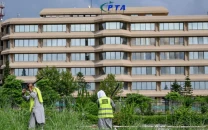The last part
The HIV epidemic has now become endemic as neglect, apathy and injustice add to the suffering of those affected

Medical mysteries — whether in real life or in fiction — often start with public anxiety.
In the beginning, no one knows what ails the vulnerable, as they feel the full force of a silent attacker.
Life is disrupted.
Clinics and hospitals see a rise in the patient numbers, people start to worry about all kinds of things, and conspiracy theories take hold.
The next phase is investigation and putting pieces together.
Interviews and clues start to fill the gaps.
There are missteps and triumphant moments.
Ultimately we find out what happened, what went wrong and why.
But while the fiction typically ends here, the real stories have one more important (but significantly less exciting) part.
That part is about fixing the system, about making sure this never happens again, in that community, or elsewhere in the country.
There was a time in Pakistan when medical mysteries remained as such.
There were some investigations and some court cases, but when the initial results became uncomfortable and powerful people were known to be involved, things were abruptly stopped.
Or there were reports but they remained sealed and inaccessible.
But lately, we have made progress and gone past this hurdle.
We have gotten pretty good at mapping the problem and identifying the culprits.
We now know exactly what happened.
But we remain completely uninterested in doing anything about it.
The HIV outbreak in Sindh made global news in 2019.
The story was heartbreaking.
It was the worst outbreak in the world among children.
The affected children in and around Larkana were mostly of poor background.
Needle reuse, widespread corruption, quackery and neglect of the problems facing the poor made a deadly cocktail that impacted thousands of children.
The story became global news.
As it often happens, global focus (and not the alarms raised by local doctors) got us to attend to the crisis.
The problem was carefully studied and the trajectory of infection was identified.
It was our own failure at every level.
Then came the bold promises of sorting out the mess, supporting the children and starting a new journey.
None of that, unfortunately, happened.
Since 2019, hundreds of children have already died due to complications.
Systemic injustice had the odds stacked against them already.
Poor nutrition, lack of awareness and social stigma made the difficult problem even worse.
But the problem never went away.
Earlier this year, Sindh saw an uptick of cases once again that continue unabated.
A senior official, Dr Ershad Kazmi, with Sindh HIV/ AIDS team, remarked that “the 2019 HIV outbreak is now an ongoing epidemic in the four Talukas which are attached to each other.” He was clear that poor infection prevention and control (IPC) protocols were to blame for the 2019 outbreak.
Yet little has changed four years later.
“Sindh Healthcare Commission was supposed to eliminate quackery but unfortunately, it has miserably failed to fulfil its responsibilities including implementation of IPC guidelines and recommendations,” said Dr Kazmi, who was also frustrated that even general practitioners and private hospitals were failing to implement the prevention and control guidelines.
This is no longer making the news.
Perhaps not until global attention is diverted this way again.
The epidemic has now become endemic — a permanent feature of a lived experience affecting the poor communities who have no option, no outlet and no one to undo the wrong they are subjected to.
There is little comfort in solving the medical mystery when those who are affected are stuck in a vicious cycle of neglect, apathy and injustice.
The ending of this story brings no closure.
Or perhaps this story has no ending.
The misery goes on from one generation to the next.












COMMENTS
Comments are moderated and generally will be posted if they are on-topic and not abusive.
For more information, please see our Comments FAQ